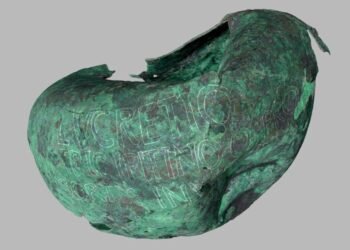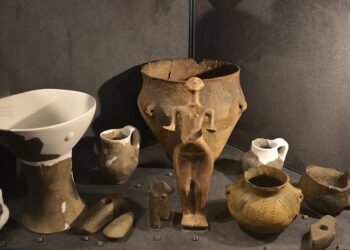In a recent archaeological excavation at Vinjeøra in southern Trøndelag County, researchers made an astonishing discovery that exceeded their expectations.

Led by archaeologist and Project Manager Silje Elisabeth Fretheim, the team embarked on a quest to uncover a Stone Age settlement dating back to around 11,500 to 10,000 years ago, during the first human settlements along the Norwegian coast.
Initial findings hinted at the presence of large flint pieces, reminiscent of early pioneer settlements. However, the true nature of their discovery turned out to be even more captivating.
Upon delving deeper into the excavation at Vinjeøra, the researchers stumbled upon artifacts that defied conventional expectations. Rather than resembling the artifacts associated with pioneer settlements, they uncovered small and medium-sized flint objects known as lithics and microlithics. These lithics exhibited remarkably straight and parallel edges, suggesting precision akin to that of tools crafted with a ruler.
This revelation challenged the initial hypothesis of pioneer culture. Instead, the evidence pointed to a different group of people who had arrived in Finnmark from the east around 9000 BC.
Scandinavia, with its prolonged ice cover during the last Ice Age, presented a unique backdrop for human migration. The Norwegian coast had only become ice-free approximately 12,500 years ago, with the first human settlers arriving nearly a thousand years later.
Skeletal analyses had previously revealed two significant waves of migration in Scandinavia following the retreat of the ice. The first wave originated from the southwest, comprising individuals who had inhabited Spain and Portugal during the last Ice Age. These early settlers, known for their dark skin and blue eyes, swiftly populated the entire Norwegian coast up to Finnmark.
A thousand years later, a second wave of migration emerged from the northeast. These migrants had journeyed from regions near the Black Sea or Ukraine, traversing north through Russia and Finland to reach the Finnmark coast. Distinguished by lighter skin and varying eye colors, they brought with them a distinct technique for crafting stone tools. This technique eventually gained ascendancy over the methods employed by southern migrants.
The meeting of these two cultures resulted in a mutual exchange of knowledge. The eastern migrants introduced novel technology, while the southern settlers possessed a deep understanding of the coastal landscape and way of life. This synergy allowed the eastern group to adapt to the local lifestyle. During the initial centuries, they adopted a nomadic existence, dwelling in lightweight structures, possibly tents, and relying on the sea for sustenance, much like the southern pioneers.
DNA studies corroborated the interaction between these two groups. Nevertheless, the scarcity of artifacts directly tied to the eastern immigrants in the outer coastal regions of Central Norway posed a unique challenge. Changes in sea levels following the Ice Age had washed away or buried evidence of settlements between Finnmark and Eastern Norway, rendering few discoveries.
Deep within fjords, however, uplift processes had preserved settlements. Archaeologists’ ability to target specific areas for excavation depended on the circumstances, often determined by infrastructure or building projects. In the case of Vinjeøra, the Norwegian Public Roads Administration’s construction of the new E39 road provided the opportunity for archaeological excavation.























